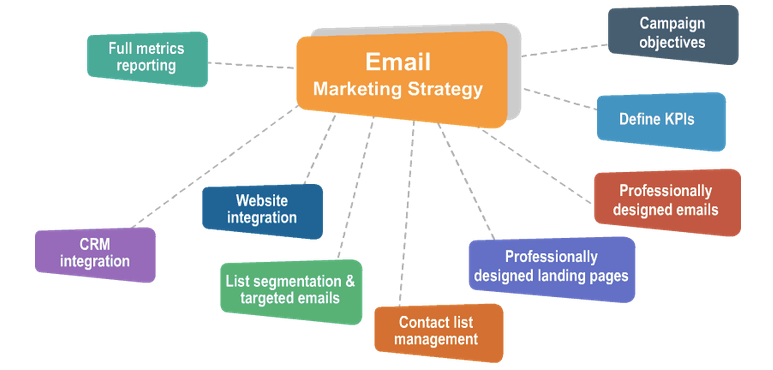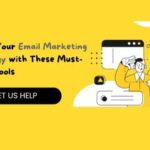Are you looking for effective email marketing strategies to help boost your online business? Well, you’ve come to the right place! In this article, we will delve into the world of email marketing and discuss some proven strategies that can help you connect with your audience and achieve your business goals. So, let’s dive right in and discover how you can take your email marketing to the next level!
When it comes to email marketing, it’s important to have a clear objective in mind. Whether you want to increase sales, build brand awareness, or nurture customer relationships, having a goal will guide your strategy. Next, you’ll want to focus on building a quality email list. This means collecting email addresses from people who have shown genuine interest in your business. Remember, it’s all about quality over quantity!
Once you have a solid email list, it’s time to craft engaging and relevant content for your subscribers. Personalization is key here, as it allows you to tailor your messages to each individual’s interests and preferences. Consider segmenting your list based on demographics, past purchases, or engagement levels to deliver more targeted content. Finally, don’t forget to test and analyze your email campaigns to see what’s working and what’s not. This will help you refine your strategies and continuously improve your email marketing efforts.
In this article, we’ll dive deep into each of these strategies and provide you with practical tips and examples that you can implement right away. So, whether you’re new to email marketing or looking to revamp your strategy, stay tuned and get ready to learn some valuable insights!
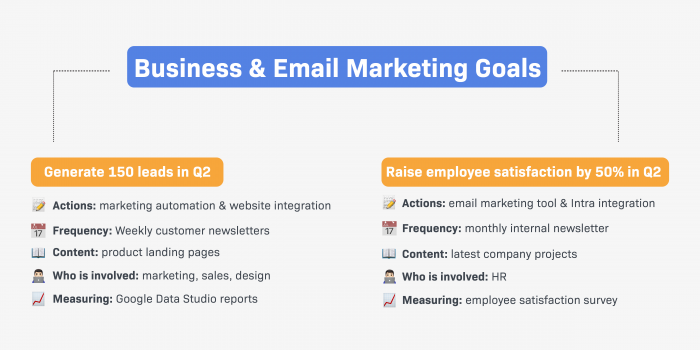
1. Understanding Email Marketing
Email marketing is a powerful tool for businesses to reach and engage with their target audience. It involves sending targeted messages directly to individuals’ email addresses, allowing businesses to communicate valuable information, promote products or services, and build relationships with their customers. By understanding the benefits and importance of email marketing, as well as the different types of email marketing campaigns, businesses can effectively leverage this strategy to drive results.
1.1 Benefits of Email Marketing
Email marketing offers several key benefits for businesses. Firstly, it is a cost-effective marketing channel compared to traditional forms of advertising, such as print or television. Businesses can save on printing and distribution costs by delivering messages directly to subscribers’ inboxes. Additionally, email marketing provides a high return on investment (ROI), with studies showing that for every dollar spent on email marketing, the average ROI is $42.
Secondly, email marketing allows businesses to reach a highly targeted audience. By segmenting their email lists based on demographics, interests, or past purchase behavior, businesses can send personalized messages that resonate with individual subscribers. This targeted approach increases the likelihood of recipients engaging with the content and taking desired actions, such as making a purchase or signing up for a newsletter.
Lastly, email marketing is a measurable marketing strategy. Businesses can track and analyze various metrics, such as open rates, click-through rates, and conversion rates, to gain insights into the effectiveness of their campaigns. This data allows businesses to make data-driven decisions and optimize their email marketing efforts for better results.
1.2 Importance of Email Marketing in Business
Email marketing plays a critical role in a business’s overall marketing strategy. It allows businesses to nurture their leads and build long-term relationships with their customers. Email campaigns can be designed to guide subscribers through the customer journey, from awareness to consideration and ultimately, making a purchase.
Moreover, email marketing enables businesses to stay top of mind with their audience. By sending regular newsletters, updates, or promotional offers, businesses can maintain regular communication with their subscribers and keep them engaged with their brand. This consistent communication helps businesses establish trust and credibility, making it more likely that subscribers will choose their products or services over competitors’.
Furthermore, email marketing provides businesses with a direct line of communication with their customers. Unlike social media or other advertising platforms, where algorithms determine the visibility of content, email allows businesses to reach their subscribers directly and have guaranteed delivery of their messages. This direct communication channel presents businesses with an opportunity to provide personalized and relevant content, ultimately driving engagement and driving results.
1.3 Types of Email Marketing Campaigns
There are various types of email marketing campaigns that businesses can implement depending on their objectives and target audience. Some common types of email marketing campaigns include:
-
Welcome Emails: These emails are sent to new subscribers to welcome them to the email list and provide them with relevant information about the business or offer a special discount or incentive.
-
Newsletter Emails: Newsletter emails are regularly sent to subscribers to provide them with updates, relevant content, industry news, or exclusive offers. They help businesses stay connected with their audience and strengthen brand loyalty.
-
Promotional Emails: Promotional emails are designed to drive immediate action, such as making a purchase or taking advantage of a limited-time offer. These emails often contain discount codes, product highlights, or exclusive deals.
-
Cart Abandonment Emails: These emails are triggered when a customer adds items to their shopping cart but fails to complete the purchase. Cart abandonment emails serve as a reminder and often include incentives to encourage customers to complete their purchase.
-
Re-engagement Emails: Re-engagement emails are sent to inactive subscribers to rekindle their interest in the brand. They often include special offers, personalized recommendations, or reminders of what the subscriber has been missing.
Overall, understanding the different types of email marketing campaigns allows businesses to tailor their strategies to meet their specific goals and effectively communicate with their audience.
2. Building an Email Subscriber List
Building an email subscriber list is a crucial step in implementing effective email marketing strategies. A quality email list consists of individuals who have willingly opted in to receive emails from a business. By following these steps, businesses can build and grow their email subscriber base.
2.1 Creating Targeted Opt-In Forms
The first step in building an email subscriber list is creating targeted opt-in forms. Opt-in forms are typically placed on a business’s website, landing page, or social media profiles, and provide visitors with an opportunity to subscribe to the email list. These forms should be strategically designed to capture the attention of visitors and entice them to provide their email addresses.
To create effective opt-in forms, businesses should consider the following:
-
Placement: Opt-in forms should be prominently displayed on high-traffic pages where visitors are most likely to convert, such as the homepage or checkout page.
-
Incentives: Offering incentives, such as exclusive discounts, free resources, or valuable content, can motivate visitors to subscribe to the email list.
-
Clear Call-to-Action: Opt-in forms should have a clear and compelling call-to-action, instructing visitors to enter their email addresses and join the email list.
-
Minimal Fields: Requesting minimal information, such as just the email address, reduces friction and increases the likelihood of visitors subscribing.
-
Mobile-Friendly Design: Opt-in forms should be optimized for mobile devices, as an increasing number of users access the internet and complete transactions on their smartphones.
By creating targeted opt-in forms, businesses can capture the attention of their website visitors and encourage them to subscribe to their email list.
2.2 Implementing Email List Segmentation
Once businesses have started building their email subscriber list, they should consider implementing email list segmentation. List segmentation involves dividing the email list into smaller groups based on specific criteria, such as demographics, interests, or past purchase behavior. This segmentation allows businesses to send personalized and relevant content to each segment, increasing engagement and conversion rates.
Some common segmentation criteria include:
-
Demographics: Segmenting by demographics, such as age, gender, or location, allows businesses to tailor their messaging to each group’s specific preferences or needs.
-
Interests: Segmenting by interests or preferences enables businesses to send targeted content that aligns with each subscriber’s areas of interest.
-
Purchase Behavior: By segmenting based on past purchase behavior, businesses can send personalized recommendations, relevant product updates, or exclusive offers to increase sales and customer loyalty.
-
Engagement Level: Segmenting by engagement level, such as active subscribers, inactive subscribers, or recent purchasers, allows businesses to send re-engagement emails, targeted promotions, or exclusive loyalty rewards.
Implementing email list segmentation requires businesses to collect and analyze data from their subscribers. This data can be gathered through online surveys, purchase histories, or website tracking tools. By understanding their subscribers’ preferences and behaviors, businesses can deliver tailored content that resonates with each segment.
2.3 Growing Your Subscriber Base
In addition to creating opt-in forms and implementing segmentation, businesses should also focus on growing their email subscriber base. The more subscribers a business has, the larger their potential reach and customer base. Here are some effective strategies for growing the subscriber base:
-
Content Upgrades: Offering valuable content upgrades, such as e-books, guides, or templates, in exchange for email addresses can incentivize visitors to subscribe.
-
Social Media Promotion: Promoting the email list on social media platforms and providing a clear call-to-action can encourage followers to join the email list.
-
Referral Programs: Offering incentives, such as discounts or exclusive content, to subscribers who refer their friends or family members can help grow the email list organically.
-
Partnerships or Collaborations: Partnering with other businesses or influencers in the same industry can expose the email list to a wider audience and attract new subscribers.
-
Events or Webinars: Hosting events or webinars and requiring attendees to provide their email addresses for registration can help grow the email list while providing value to participants.
By consistently implementing these strategies, businesses can steadily grow their email subscriber base and expand their reach.
3. Crafting Effective Email Content
Once businesses have built their email subscriber list, the next step is crafting effective email content. Well-crafted emails can capture attention, engage subscribers, and drive desired actions. By following these strategies, businesses can create compelling email content that resonates with their audience.
3.1 Writing Compelling Subject Lines
The subject line of an email is the first thing subscribers see in their inbox and plays a crucial role in whether they open and read the email or not. Writing compelling subject lines can increase open rates and overall engagement. Here are some tips for crafting effective subject lines:
-
Keep it concise: Subject lines should be short and to the point, preferably under 50 characters. This ensures that the subject line is fully visible on multiple devices and avoids being cut off.
-
Personalization: Including the subscriber’s name or referencing their past behavior can make the subject line feel more personalized and increase the likelihood of it being opened.
-
Create urgency: Using words or phrases that create a sense of urgency, such as “limited time offer” or “ending soon,” can motivate subscribers to open the email immediately.
-
Spark curiosity: Subject lines that pique curiosity or offer teasers, such as “You won’t believe what’s inside…” or “Get ready for a surprise,” can intrigue subscribers and encourage them to open the email.
-
Avoid spam triggers: Using excessive exclamation marks, all-caps letters, or spam trigger words can trigger spam filters and prevent the email from reaching subscribers’ inboxes.
By following these tips, businesses can craft subject lines that grab attention, spark curiosity, and motivate subscribers to open their emails.
3.2 Personalization and Customization
Effective email content should be personalized and customized to each subscriber, making them feel valued and understood. Personalization goes beyond simply addressing the subscriber by their first name. Here are some ways to personalize and customize email content:
-
Segmented Content: Sending targeted content to each segment of subscribers based on their demographics, interests, or past behavior demonstrates that the business understands their specific needs and preferences.
-
Product Recommendations: Using past purchase behavior or browsing history, businesses can recommend products or services that align with each subscriber’s preferences, increasing the chances of conversion.
-
Dynamic Content: Including dynamic elements in emails, such as personalized images, videos, or interactive elements, can enhance engagement and make subscribers feel more connected to the brand.
-
Automated Trigger Emails: Sending automated trigger emails based on specific actions or events, such as a welcome series or cart abandonment emails, provides timely and relevant content to subscribers.
By incorporating personalization and customization into email content, businesses can deliver tailored messages that resonate with each subscriber and drive higher engagement and conversion rates.
3.3 Utilizing Visuals and Multimedia
Incorporating visuals and multimedia elements into email content can make it more engaging and memorable. Here are some ways to effectively utilize visuals and multimedia in emails:
-
High-Quality Images: Including high-quality images of products, lifestyle shots, or visual representations of data can capture attention and make the email visually appealing.
-
Videos: Embedding videos in emails can provide additional context, showcase product demonstrations, or deliver valuable content that would otherwise require a click-through.
-
Infographics or Data Visualizations: Presenting complex information or statistics in the form of infographics or data visualizations can make the content more digestible and visually appealing.
-
GIFs or Animations: Adding GIFs or simple animations can add an element of fun or showcase product features in an engaging way.
-
Interactive Elements: Incorporating interactive elements, such as quizzes, surveys, or product configurators, can increase engagement and encourage subscribers to actively participate in the email content.
By using visuals and multimedia strategically, businesses can enhance the overall email experience, captivate subscribers’ attention, and effectively convey their message.
4. Automation and Email Sequences
Automation and email sequences are powerful tools in an effective email marketing strategy. Automating certain aspects of email marketing can save time and provide consistent messaging to subscribers. Here are some ways businesses can leverage automation and create effective email sequences.
4.1 Setting up Automated Email Campaigns
Automated email campaigns are pre-scheduled emails that are triggered based on specific actions or events. Businesses can set up automated email campaigns to deliver timely and relevant content to subscribers. Common types of automated email campaigns include:
-
Welcome Series: A series of emails sent to new subscribers to introduce them to the brand, highlight key products or services, and encourage engagement.
-
Abandoned Cart Emails: Emails sent to remind subscribers who have left items in their shopping cart to complete the purchase, often including incentives or personalized product recommendations to encourage conversion.
-
Post-Purchase Follow-up: Emails sent after a purchase to thank the customer, request a review or feedback, or offer additional products or services that complement their purchase.
-
Birthday or Anniversary Emails: Automated emails sent to subscribers on their birthday or anniversary, often including special discounts or personalized offers to celebrate the occasion.
Setting up these automated email campaigns allows businesses to provide consistent and timely communication to subscribers without the need for manual intervention.
4.2 Creating Effective Email Sequences
Email sequences are a series of emails sent to subscribers in a specific order and at predetermined intervals. They are designed to guide subscribers through a specific journey or nurture them towards a desired action. Here are some tips for creating effective email sequences:
-
Define the Goal: Determine the desired outcome or action for the email sequence, such as making a purchase, signing up for a webinar, or completing a survey.
-
Outline the Flow: Plan the sequence flow and the content of each email, ensuring a logical progression that guides subscribers towards the desired action.
-
Provide Value: Each email in the sequence should provide value to the subscriber, whether it’s educational content, exclusive offers, or personalized recommendations.
-
Include Clear Call-to-Action: Clearly communicate the desired action in each email, providing a compelling reason for subscribers to take that action.
-
Measure and Optimize: Track the performance of the email sequence by monitoring metrics such as open rates, click-through rates, and conversion rates. Use these insights to refine and optimize the sequence for better results.
By leveraging automation and email sequences, businesses can provide consistent and targeted communication that nurtures subscribers and increases the likelihood of conversions.
4.3 Nurturing Leads with Drip Campaigns
Drip campaigns are a form of email sequence that allows businesses to nurture leads over time. Unlike traditional email sequences, drip campaigns are often longer and paced out to provide a steady flow of valuable content to subscribers. Here are some best practices for creating effective drip campaigns:
-
Align Content with the Subscriber’s Journey: Tailor the content of each email in the drip campaign to align with the subscriber’s stage in the customer journey, whether it’s introducing the brand, providing education, or showcasing customer success stories.
-
Segmentation: Segment subscribers into different drip campaign flows based on their interests, behaviors, or demographics, delivering more targeted content that resonates with each segment.
-
Provide Value at Each Stage: Each email in the drip campaign should provide valuable and relevant content that aligns with the subscriber’s needs or pain points. This builds trust and credibility, ultimately helping convert leads into customers.
-
Automation and Personalization: Automate the delivery of drip campaigns and incorporate personalization elements, such as addressing the subscriber by their name or referencing their previous interactions with the brand.
By nurturing leads with drip campaigns, businesses can establish long-term relationships with their subscribers and move them closer to becoming loyal customers.
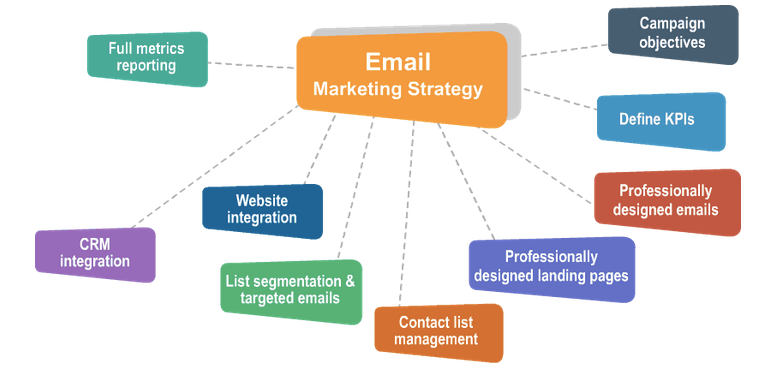
5. A/B Testing and Email Analytics
A/B testing and email analytics are essential components of an effective email marketing strategy. They allow businesses to continuously optimize their campaigns for better results and improve overall performance. Here’s how businesses can leverage A/B testing and email analytics to their advantage.
5.1 Conducting A/B Tests for Optimization
A/B testing, also known as split testing, involves creating multiple versions of an email and testing them against each other to determine which version performs better. By conducting A/B tests, businesses can identify elements that resonate with their audience, optimize their campaigns, and improve overall performance.
Here are some elements that can be tested through A/B testing:
-
Subject Lines: Test different subject lines to determine which ones lead to higher open rates.
-
Call-to-Action Buttons: Test different colors, text, or placement of call-to-action buttons to increase click-through rates.
-
Email Content: Test different copy, imagery, or layout to identify elements that resonate with subscribers and drive higher engagement.
-
Sender Name: Test using different sender names to determine which ones result in higher open rates, such as using a personal name versus a brand name.
When conducting A/B tests, it’s important to test only one element at a time to accurately measure its impact on performance. By continuously testing and optimizing campaigns, businesses can improve their email marketing effectiveness over time.
5.2 Tracking and Analyzing Email Metrics
Email analytics provide valuable insights into the performance of email campaigns. By tracking and analyzing various metrics, businesses can evaluate the effectiveness of their campaigns, identify areas for improvement, and make data-driven decisions. Some key email metrics to track include:
-
Open Rates: The percentage of recipients who open the email. Low open rates may indicate ineffective subject lines or irrelevant content.
-
Click-Through Rates: The percentage of recipients who click on a link within the email. Low click-through rates may indicate ineffective call-to-action buttons or unengaging content.
-
Conversion Rates: The percentage of recipients who take the desired action, such as making a purchase or signing up for a webinar. Low conversion rates may indicate a need for better targeting or more persuasive content.
-
Bounce Rates: The percentage of emails that were not delivered due to invalid email addresses or other issues. High bounce rates may indicate issues with the email list quality or sender reputation.
-
Unsubscribe Rates: The percentage of recipients who unsubscribe from the email list. High unsubscribe rates may indicate unsubscribe requests not being honored or irrelevant content being delivered.
By tracking these metrics, businesses can gain insights into the strengths and weaknesses of their email marketing campaigns and make informed decisions to improve performance.
5.3 Utilizing Data for Continuous Improvement
The data collected from A/B testing and email analytics should be used for continuous improvement. By analyzing data trends and identifying patterns, businesses can optimize their email marketing strategies for better results. Here are some strategies for leveraging data for continuous improvement:
-
Iterative Testing: Use A/B testing to continually iterate and improve on successful elements, such as subject lines, call-to-action buttons, or email content.
-
Segmentation Refinement: Use data on subscriber behaviors, interests, or demographics to make informed decisions on segmenting the email list and delivering more personalized content.
-
Content Optimization: Analyze engagement metrics to identify content that resonates well with subscribers and replicate those elements in future campaigns.
-
Automation Optimization: Use data on open rates, click-through rates, and conversion rates to refine automated email campaigns and sequences for better performance.
By utilizing data-driven insights, businesses can continuously improve their email marketing strategies and drive better results.
6. Effective Email List Management
Effective email list management is crucial for maintaining a healthy email subscriber base and optimizing email marketing efforts. Here are some key practices for managing an email list effectively.
6.1 Regular List Clean-Up and Maintenance
Regular list clean-up and maintenance involve removing inactive or unengaged subscribers from the email list to maintain list quality and deliverability. Here are some ways to effectively manage the email list:
-
Identify Inactive Subscribers: Determine criteria for defining inactive or unengaged subscribers, such as lack of opens or clicks over a specific period.
-
Re-Engagement Campaigns: Before removing inactive subscribers, send re-engagement campaigns to encourage them to re-engage with the brand. Offer incentives, personalized content, or exclusive offers to entice them back.
-
List Segmentation: Segment the email list based on engagement levels to deliver targeted content to active subscribers and re-engagement campaigns to inactive subscribers.
-
Remove Inactive Subscribers: After the re-engagement campaign, remove subscribers who still show no signs of engagement. This helps maintain list health and deliverability rates.
By regularly cleaning and maintaining the email list, businesses can ensure that their messages reach engaged subscribers and improve overall email marketing performance.
6.2 Managing Unsubscribes and Spam Complaints
Managing unsubscribes and spam complaints is an essential aspect of email list management. While businesses aim to minimize unsubscribes and complaints, managing them effectively is crucial to maintain a good sender reputation and comply with email marketing regulations. Here are some best practices:
-
Clear Unsubscribe Process: Make the unsubscribe process easy and visible to subscribers, ensuring they have the option to opt-out of receiving future emails.
-
Honor Unsubscribe Requests: Once a subscriber opts out, promptly honor their request and remove them from the email list. Failing to do so may lead to complaints and damage the sender’s reputation.
-
Monitor Spam Complaints: Keep a close eye on spam complaint rates and identify potential reasons for complaints, such as irrelevant content or excessive frequency. Address any issues promptly to maintain a good sender reputation.
-
Complaint Investigation and Resolution: Investigate and address any spam complaints promptly. Take necessary steps to prevent similar issues in the future, such as improving content relevancy or sending preferences.
-
Provide Value and Relevance: Delivering valuable and relevant content can help minimize unsubscribes and spam complaints, as subscribers are more likely to engage with content that is useful to them.
By managing unsubscribes and spam complaints effectively, businesses can maintain a positive brand reputation, improve overall deliverability rates, and demonstrate a commitment to respecting subscribers’ preferences.
6.3 Implementing Compliance with Data Privacy Regulations
Data privacy regulations, such as the General Data Protection Regulation (GDPR) and the California Consumer Privacy Act (CCPA), have imposed stricter requirements for businesses collecting and processing personal data. Compliance with these regulations is essential to maintain trust and protect subscribers’ privacy. Here are some best practices for implementing compliance:
-
Permission-based Opt-Ins: Ensure subscribers have given explicit permission to receive email communication and clearly communicate how their data will be used.
-
Data Security Measures: Implement robust security measures to protect subscribers’ data from unauthorized access or breaches.
-
Data Retention Policies: Establish data retention policies to only retain subscriber data for as long as necessary and securely dispose of data when it is no longer needed.
-
Transparency Statements: Provide a clear and concise privacy policy that outlines how subscriber data is collected, used, and stored.
-
Subscriber Rights: Facilitate subscribers’ rights, such as the right to access their data, request corrections, or withdraw consent.
By implementing compliance with data privacy regulations, businesses can demonstrate their commitment to protecting subscribers’ data, build trust, and maintain strong relationships with their audience.
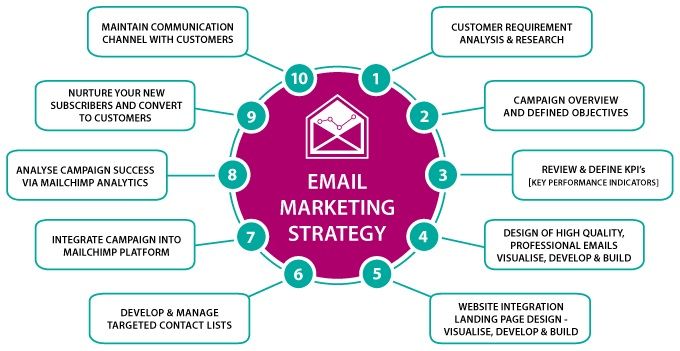
7. Personalization and Segmentation Strategies
Personalization and segmentation are essential strategies for creating targeted and relevant email marketing campaigns. They help businesses deliver tailored content that resonates with individual subscribers, increasing engagement and conversions. Here are some strategies for effective personalization and segmentation.
7.1 Creating Buyer Personas for Targeted Campaigns
Buyer personas are fictional representations of an ideal customer based on demographic, behavioral, and psychographic data. Creating buyer personas helps businesses better understand their target audience and tailor their email marketing campaigns to meet their specific needs. Here are some steps to create effective buyer personas:
-
Research and Data Analysis: Collect and analyze demographic data, customer feedback, purchase history, or website analytics to identify common characteristics or patterns among target customers.
-
Identify Pain Points and Desires: Understand the challenges, pain points, and desires of target customers to deliver targeted content that addresses their specific needs.
-
Segmentation: Segment the email list based on buyer personas to deliver content that resonates with each segment’s preferences or challenges.
-
Personalized Messaging: Craft email content with personalized messaging that speaks directly to the pain points or desires of each buyer persona.
By creating buyer personas and segmenting the email list accordingly, businesses can deliver personalized email content that resonates with individual subscribers, leading to higher engagement and conversions.
7.2 Using Behavioral Triggers for Personalization
Behavioral triggers are actions or events that subscribers take that trigger a specific email to be sent. By leveraging behavioral triggers, businesses can deliver personalized and timely content that aligns with each subscriber’s interests or needs. Here are some common behavioral triggers and examples of how they can be utilized:
-
Welcome Emails: Send a welcome email immediately after a subscriber joins the email list to introduce the brand and provide valuable resources or a special offer.
-
Abandoned Cart Emails: Send an email to remind subscribers of items left in their shopping cart, offering incentives or personalized product recommendations to encourage completion of the purchase.
-
Purchase Follow-up Emails: Send a follow-up email after a purchase, thanking the customer, requesting a review, or offering cross-sell or upsell opportunities.
-
Inactivity Emails: Send re-engagement emails to subscribers who have not interacted with emails or made purchases in a specific period, offering personalized incentives or exclusive content.
By leveraging behavioral triggers, businesses can provide targeted and personalized content that aligns with each subscriber’s specific actions or needs, ultimately driving higher engagement and conversions.
7.3 Dynamic Content for Enhanced Engagement
Dynamic content allows businesses to customize email content based on each subscriber’s preferences, behavior, or demographics. By delivering personalized and relevant content, businesses can enhance engagement and drive desired actions. Some examples of dynamic content include:
-
Product Recommendations: Display personalized product recommendations based on each subscriber’s past purchase history, browsing behavior, or preferences.
-
Location-based Content: Customize content based on the subscriber’s location, such as showcasing local events, offers, or relevant information.
-
Countdown Timers: Utilize dynamic countdown timers to create a sense of urgency for limited-time offers or promotions.
-
Dynamic Images or Videos: Deliver personalized images or videos based on subscriber preferences, such as showcasing specific product categories or demonstrating how products can solve their specific challenges.
By incorporating dynamic content into email campaigns, businesses can enhance the subscriber experience, increase engagement, and drive higher conversions.
8. Mobile Optimization for Email Marketing
With a growing number of individuals accessing emails on mobile devices, mobile optimization is crucial for effective email marketing. By designing responsive email templates, optimizing email campaigns for mobile devices, and leveraging SMS and MMS marketing, businesses can ensure that their email marketing efforts reach and engage mobile users effectively.
8.1 Designing Responsive Email Templates
Responsive email templates are designed to automatically adjust their layout and elements to fit different screen sizes and devices. By using responsive email templates, businesses can ensure that their emails look great and are easily readable on any device. Here are some best practices for designing responsive email templates:
-
Simplified Layout: Keep the email layout clean and simple, avoiding complex designs or excessive elements that may not render well on smaller screens or slower connections.
-
Mobile-friendly Fonts: Select fonts that are legible on small screens and test for readability on various devices before sending.
-
Optimized Button Sizes: Use larger buttons and call-to-action elements to make it easier for mobile users to tap and interact with the email.
-
Minimal Scroll Length: Minimize the need for mobile users to scroll excessively by keeping the email content concise and prioritizing the most important information.
By designing responsive email templates, businesses can ensure that their emails are visually appealing, easy to read, and engaging across different devices.
8.2 Optimizing Email Campaigns for Mobile Devices
Beyond responsive email templates, optimizing the entire email campaign for mobile devices is crucial for effective mobile engagement. Here are some strategies for optimizing email campaigns for mobile devices:
-
Preview and Testing: Before sending an email campaign, preview and test it on multiple mobile devices and email clients to ensure that it renders correctly and is user-friendly.
-
Short and Engaging Subject Lines: Mobile users often have limited screen space, so keep subject lines short, engaging, and attention-grabbing to increase open rates.
-
Compelling Preheader Text: Utilize preheader text effectively to provide a glimpse of the email content and entice mobile users to open the email.
-
Engagement-focused Content: Optimize email content for mobile users by using short paragraphs, bullet points, and clear call-to-action buttons that are easy to tap.
-
Optimize Load Times: Compress images, minimize code, and utilize fast loading techniques to optimize email load times, ensuring a seamless experience for mobile users.
By implementing these optimization strategies, businesses can cater to the growing mobile audience and deliver effective email campaigns that drive engagement and conversions.
8.3 Leveraging SMS and MMS Marketing
SMS (Short Message Service) and MMS (Multimedia Messaging Service) marketing are additional strategies businesses can leverage to reach and engage mobile users effectively. SMS and MMS messages have high open rates and deliverability rates, making them valuable channels for quick and direct communication. Here are some best practices for SMS and MMS marketing:
-
Permission-based Opt-ins: Similar to email marketing, ensure that users have opted in to receive SMS or MMS messages and have provided explicit consent.
-
Short, Concise Messages: SMS and MMS messages have character and file size limitations, so keep the messages short, concise, and impactful.
-
Personalization: Personalize SMS and MMS messages by using the recipient’s name or referencing their past interactions with the brand.
-
Clear Call-to-Action: Include a clear and compelling call-to-action in SMS and MMS messages, instructing recipients to take a specific action or respond.
-
Timing and Frequency: Be mindful of the timing and frequency of SMS and MMS messages to avoid overwhelming recipients or sending messages during off-hours.
By effectively leveraging SMS and MMS marketing alongside email marketing, businesses can engage mobile users through a multi-channel approach, increasing overall reach and engagement.
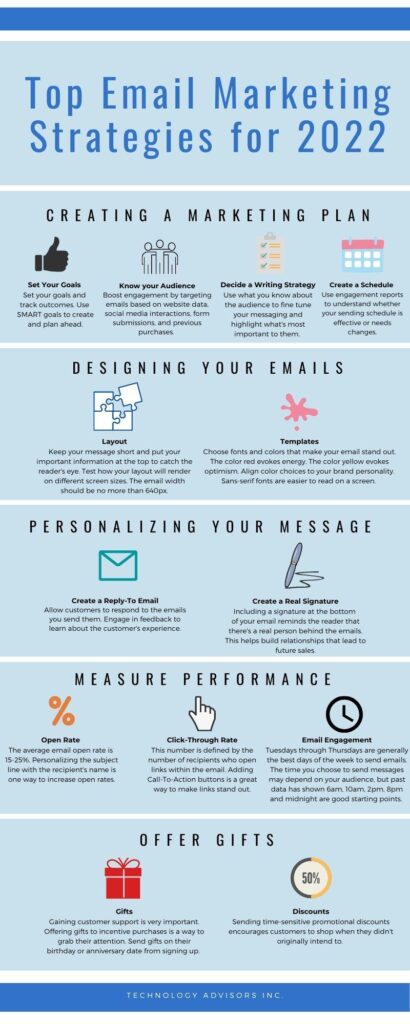
9. Email Deliverability Best Practices
Ensuring that emails reach subscribers’ inboxes is critical for email marketing success. Email deliverability best practices help businesses maintain a good sender reputation and improve the chances of their emails being seen. Here are some key practices for improving email deliverability.
9.1 Maintaining a Good Sender Reputation
A good sender reputation plays a significant role in email deliverability. Internet Service Providers (ISPs) and email clients use sender reputation as a factor in determining whether emails are delivered to the inbox or not. Here are some strategies for maintaining a good sender reputation:
-
Secure Authentication: Implement Sender Policy Framework (SPF), DomainKeys Identified Mail (DKIM), and Domain-based Message Authentication, Reporting, and Conformance (DMARC) authentication protocols to verify the identity of the sender and prevent spoofing.
-
Proper Email List Acquisition: Ensure that the email list is acquired through legitimate means and comply with permission-based marketing practices. Avoid purchasing email lists or sending unsolicited emails.
-
Content Relevancy: Deliver relevant and valuable content to subscribers, ensuring that it aligns with their interests and expectations. Irrelevant or excessive promotional content can damage the sender reputation.
-
Engagement and Feedback Loops: Monitor engagement metrics and subscriber feedback to identify potential issues or areas for improvement. Regularly clean the email list to remove inactive or unengaged subscribers.
-
ISP Guidelines and Standards: Follow the guidelines and best practices provided by ISPs to ensure compliance and maintain a good sender reputation.
By actively maintaining a good sender reputation, businesses can increase the chances of their emails being delivered to the inbox and effectively reach their subscribers.
9.2 Avoiding Spam Filters and Junk Folders
Avoiding spam filters and junk folders is crucial to ensure that emails are seen by subscribers. Here are some best practices to minimize the chances of emails being flagged as spam:
-
Content Quality: Deliver high-quality content that provides value to subscribers and avoids excessive promotional language, spam trigger words, or excessive use of symbols.
-
Avoid Spam Trigger Words: Avoid using words or phrases that are commonly associated with spam or overly promotional content, such as “free,” “buy now,” or excessive exclamation marks.
-
Avoid All-Caps and Excessive Punctuation: Using all-caps letters, excessive punctuation, or multiple exclamation marks may trigger spam filters and decrease the chances of emails being delivered to the inbox.
-
Proper Formatting: Make sure emails are properly formatted, with correct HTML structure and appropriate text-to-image ratio. Excessive use of images without corresponding text may trigger spam filters.
-
Reputation Monitoring: Regularly monitor sender reputation and deliverability metrics to identify potential issues early on and take necessary steps to address them.
By following these practices, businesses can minimize the chances of their emails ending up in spam filters or junk folders, ensuring better email deliverability.
9.3 Monitoring and Resolving Deliverability Issues
Monitoring deliverability metrics and resolving issues promptly is essential for maintaining email deliverability rates. Here are some practices for monitoring and resolving deliverability issues:
-
Monitor Bounce Rates: Track bounce rates to identify potential issues with the email list quality or sender reputation. Address hard bounces promptly by removing invalid email addresses.
-
Track Complaint Rates: Keep an eye on spam complaint rates and investigate any spikes or recurring issues. Address any complaints promptly and take necessary steps to prevent similar issues in the future.
-
Maintain List Hygiene: Regularly clean the email list by removing inactive or unengaged subscribers to maintain list quality and deliverability rates.
-
Monitor Blacklisting: Keep an eye on blacklisting services and check periodically if the sender IP or domain is listed. If blacklisted, follow the guidelines provided by the blacklist authority to resolve the issue.
-
ISP Feedback Loops: Sign up for ISP feedback loops to receive complaint data directly from ISPs and promptly address any issues or concerns.
By actively monitoring deliverability metrics and promptly resolving issues, businesses can maintain good email deliverability rates and ensure that their messages reach subscribers’ inboxes.
10. Conclusion
Effective email marketing strategies are essential for businesses looking to reach and engage their target audience. By understanding the benefits and importance of email marketing, businesses can implement strategies to build an email subscriber list, craft compelling email content, automate email campaigns, leverage data analytics, and optimize for mobile devices. By continually refining and improving email marketing efforts, businesses can drive engagement, increase conversions, and build long-term relationships with their subscribers.


